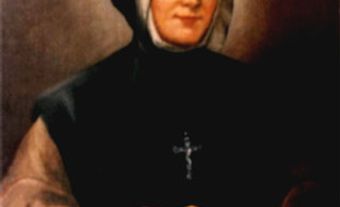Gallicanism is a doctrine which originated
in France in the Middle Ages and sought to regulate the relationship between the
Catholic Church and the state. It underlined the independence of the French
Church in terms of papal authority, but also its subordination to the royal
power. It thus confirmed the supremacy of the state in public life, unlike Ultramontanism,
which supported the submission of the Churches and kingdoms to the papacy.
Origin
Gallicanism is a political and religious
doctrine which originated in France and sought to regulate the relationship
between the Catholic Church and the state. In New France,
this relationship was governed by the French Church’s practices and traditions.
This doctrine’s characteristics included a certain mistrust of the Pope, the
defence of Gallican freedoms (in other words, the rejection of absolute papal
authority over the king of France and the nation’s Church), and the desire to
ensure the Crown’s supremacy even in spiritual issues such as appointing
bishops and establishing religious communities.
Influence
Gallicanism flourished in New France in the
latter part of the 17th century, when intendant Jean Talon and
governor general Louis
de Buade Frontenac sought to reduce overwhelming religious
influence and make the Church obey the state. A modus vivendi was
quickly reached, guaranteeing a certain autonomy to the Church while permitting
some state intervention, even in purely religious questions such as the life of
religious communities.
Conflict with Ultramontanism
A change came about after the Conquest.
Having assured its survival and won a degree of freedom under British reign, the
Church rethought the boundaries between religious and civil power. Among
supporters of Gallicanism, there were those who did not believe in papal
infallibility and those who accepted a degree of state intervention in
traditionally church-controlled domains such as education, marriage and registry-keeping
for baptisms, weddings and deaths. Two religious tendencies emerged within the
Church after 1840. On the one hand, Ultramontanism supported
the supremacy of the Church and its prior right in education, marriage
legislation, and all joint domains between Church and state. On the other, Gallicanism
modified these claims or defended the rights of the state in varying degrees.
Gallicans included groups such as the Sulpicians,
lawyers such as George-Étienne
Cartier, Rodolphe Laflamme and Joseph
Doutre, and Université Laval professors such as Jacques Crémazie and
Charles-François Langelier. Soon, however, Ultramontane extremists labelled “gallicans”
(at the time a pejorative term) anyone who did not think the way they did.
Gallicanism eventually merged with Catholic liberalism, which was similarly
denounced until the end of the 19th century.

 Share on Facebook
Share on Facebook Share on X
Share on X Share by Email
Share by Email Share on Google Classroom
Share on Google Classroom



